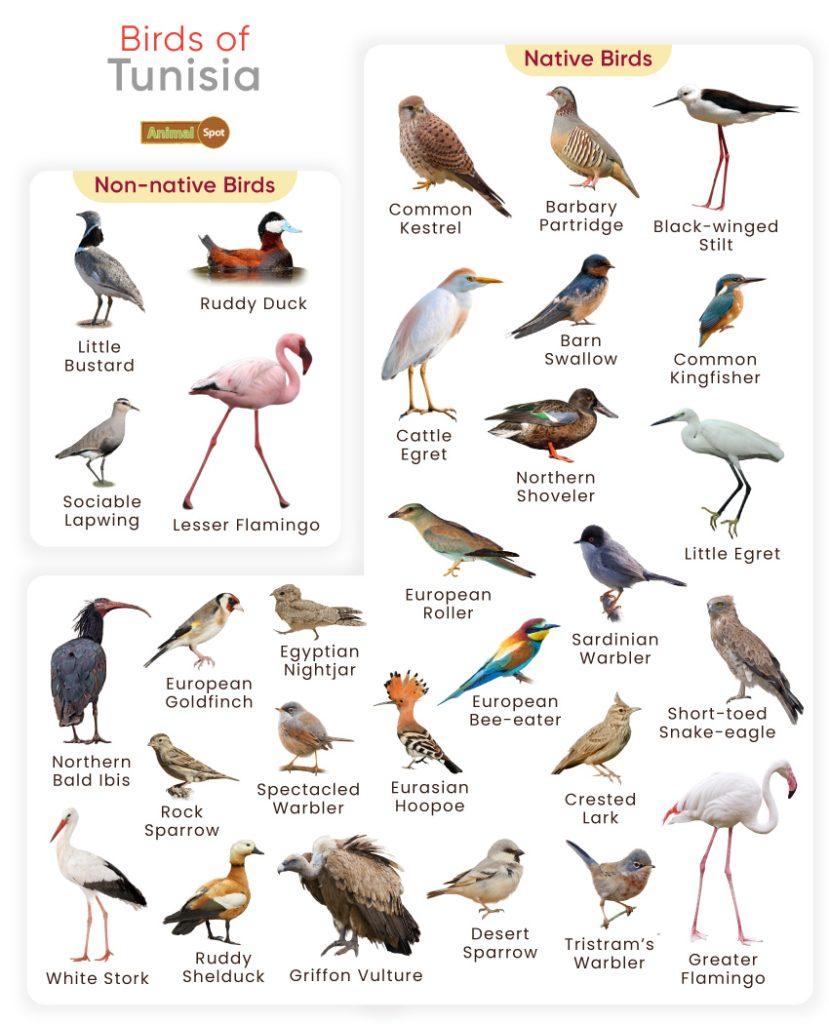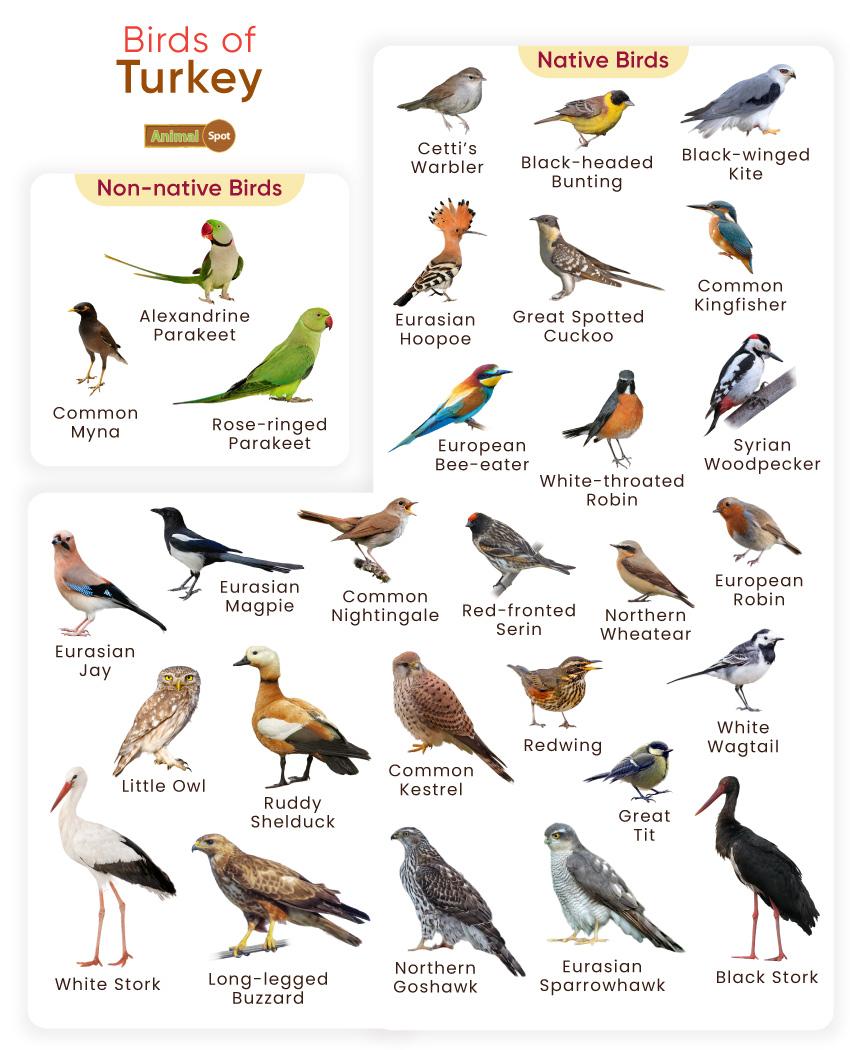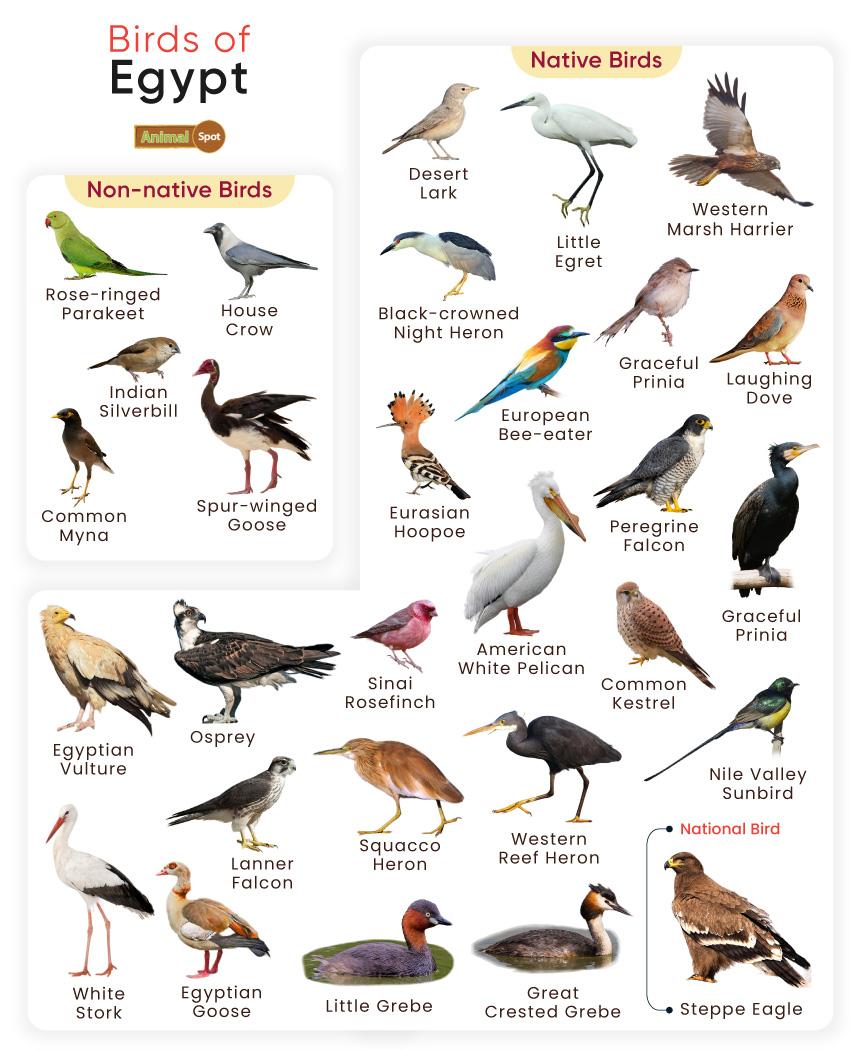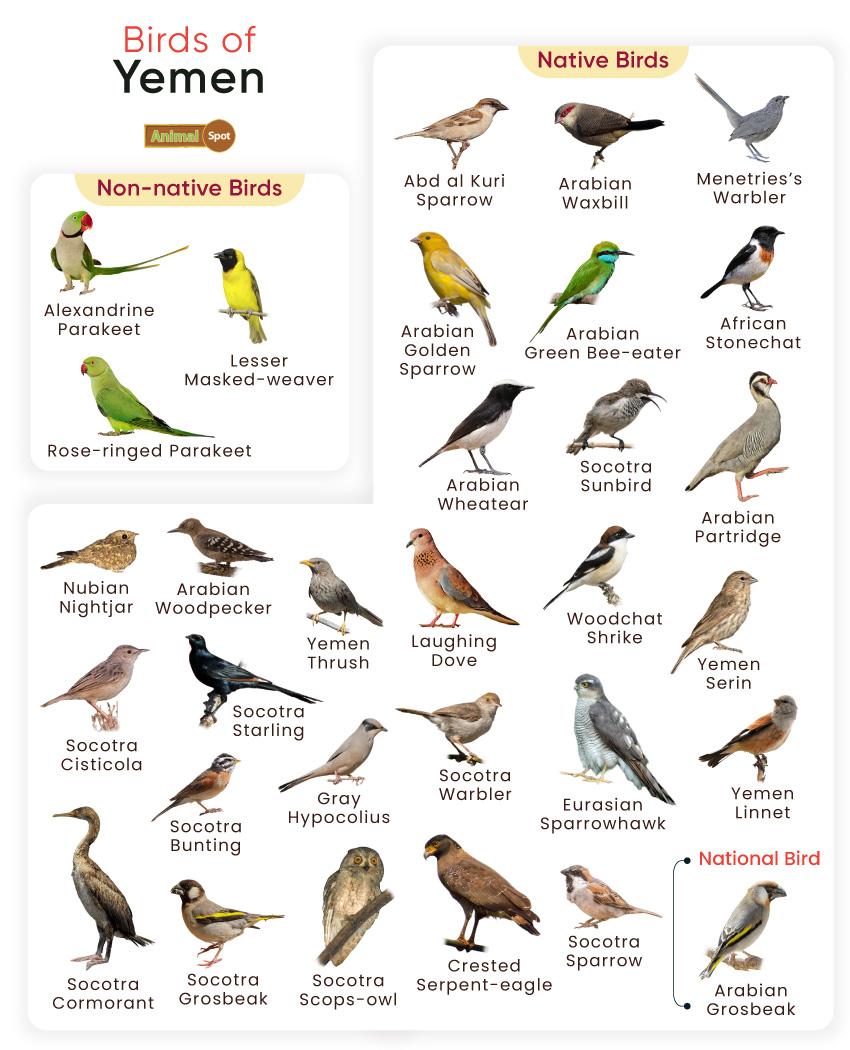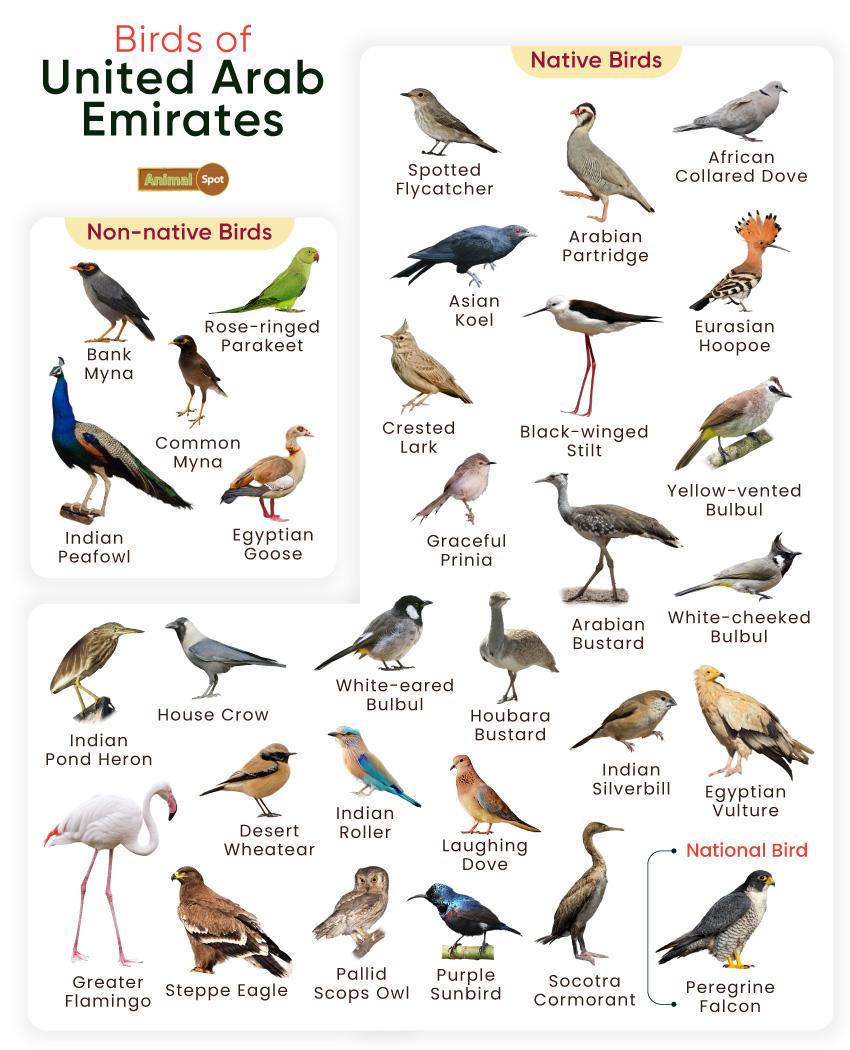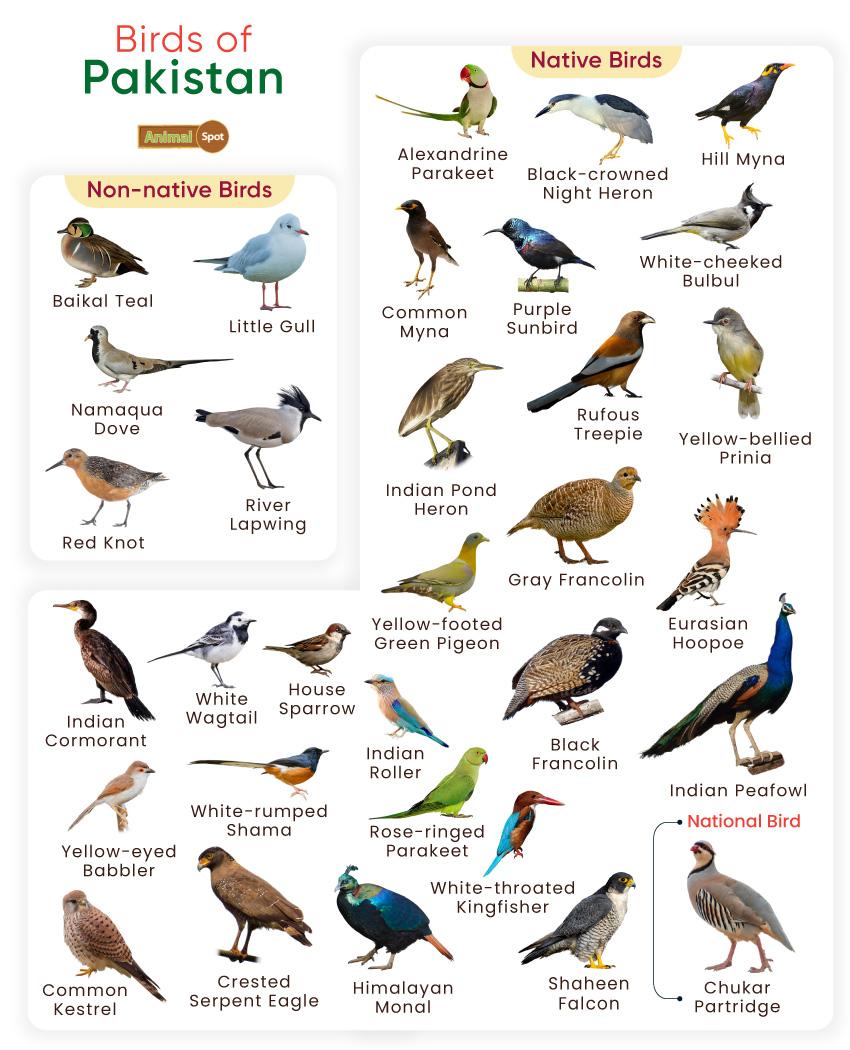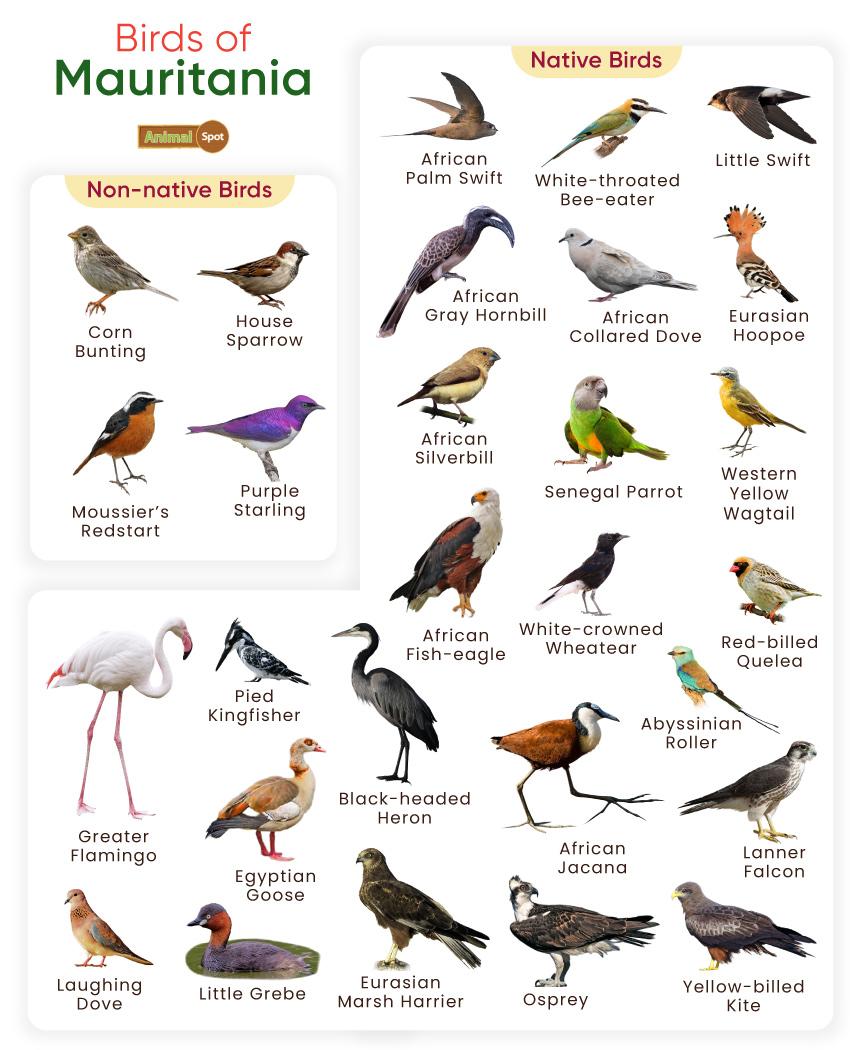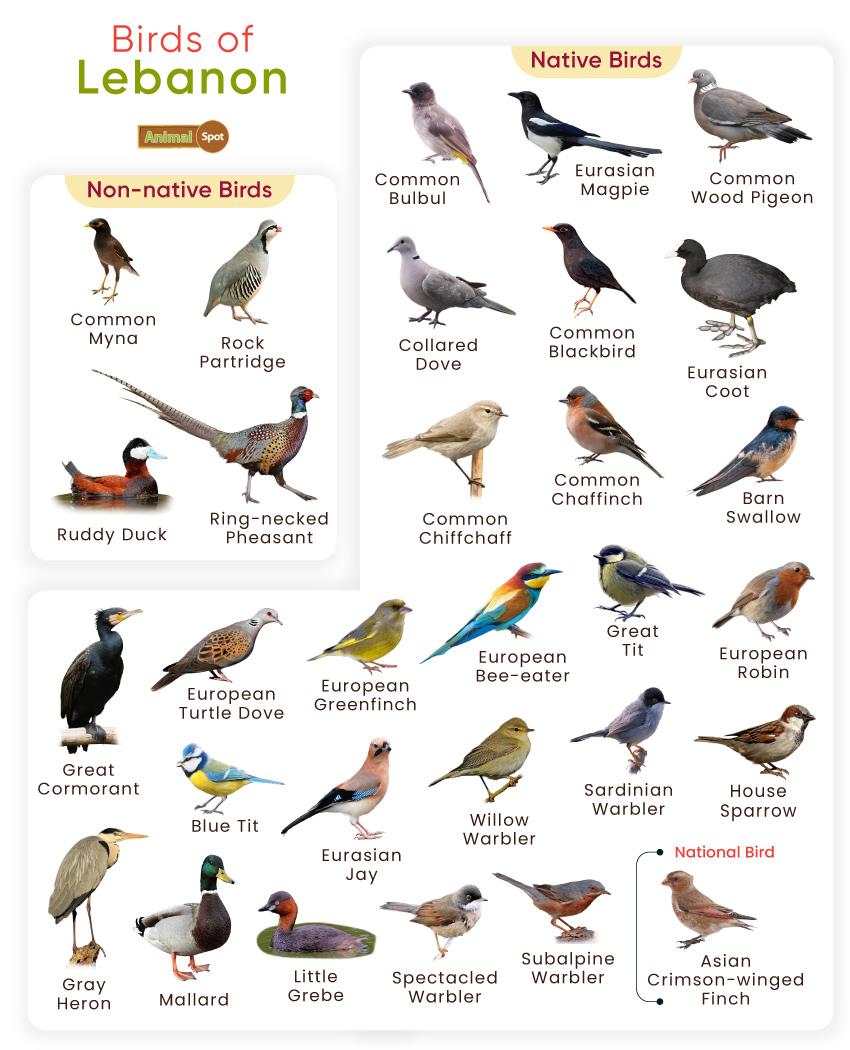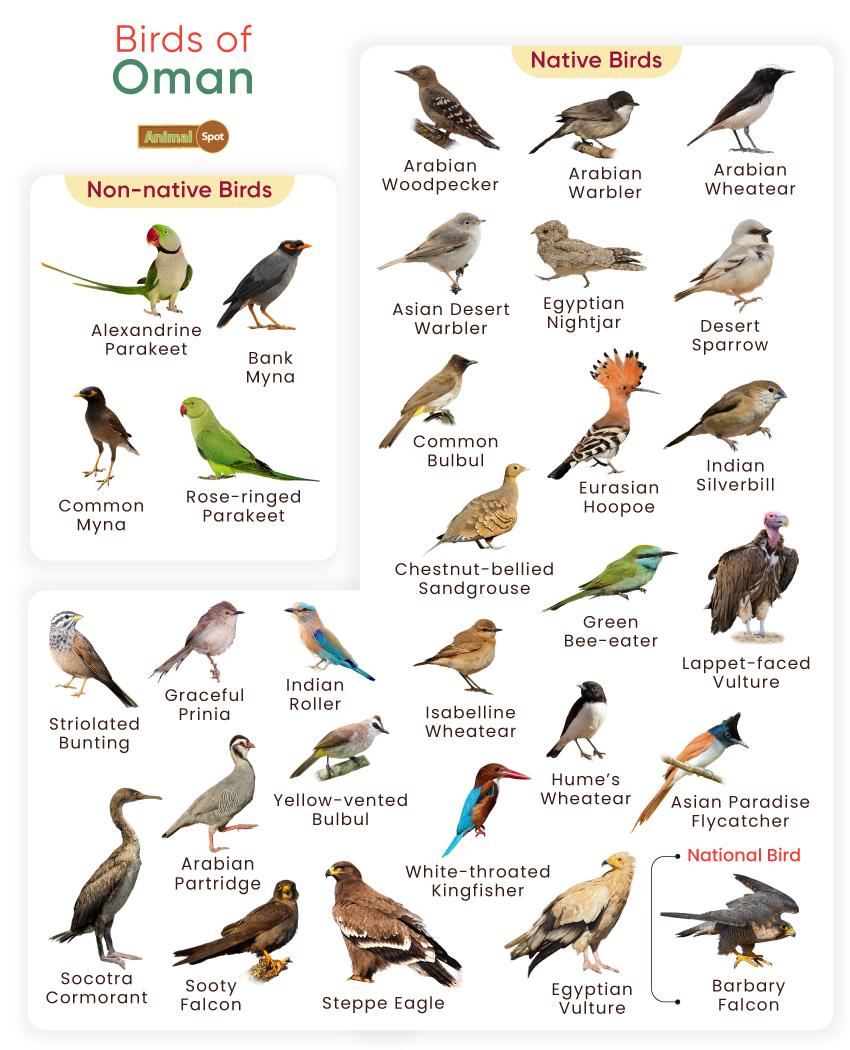Over 400 birds live in Tunisia. The country has interesting habitats, including coniferous forests, dry woodlands, steppe, and wetlands. This allows different avifauna like waterbirds, birds of prey, and passerine birds to live here.
Some notable species include the Common Kestrel, the Greater Flamingo, and the Barn Swallow.
List of Common Birds Found in Tunisia
Native Birds
- African Collared Dove
- Alpine Swift
- Barbary Partridge
- Barn Swallow
- Barred Warbler
- Bearded Reedling
- Blackcap
- Black-crowned Tchagra
- Black-eared Wheatear
- Black-necked Grebe
- Black Redstart
- Black-winged Stilt
- Blue-headed Wagtail
- Blue Rock Thrush
- Bluethroat
- Bonelli’s Warbler
- Brown-necked Raven
- Calandra Lark
- Carrion Crow
- Cattle Egret
- Cetti’s Warbler
- Chaffinch
- Citrine Wagtail
- Collared Pratincole
- Common Chiffchaff
- Common Crossbill
- Common Cuckoo
- Common Hoopoe
- Common House Martin
- Common Kestrel
- Common Kingfisher
- Common Raven
- Common Redstart
- Common Swift
- Common Wood Pigeon
- Cream-colored Courser
- Crested Lark
- Desert Lark
- Desert Sparrow
- Desert Wheatear
- Eastern Olivaceous Warbler
- Eastern Orphean Warbler
- Egyptian Nightjar
- Eurasian Blackcap
- Eurasian Collared Dove
- Eurasian Crag Martin
- Eurasian Golden Oriole
- Eurasian Hoopoe
- Eurasian Jay
- Eurasian Linnet
- Eurasian Magpie
- Eurasian Scops Owl
- Eurasian Skylark
- Eurasian Turtle Dove
- Eurasian Wryneck
- European Bee-eater
- European Goldfinch
- European Greenfinch
- European Green Woodpecker
- European Nightjar
- European Robin
- European Roller
- European Serin
- European Stonechat
- European Storm Petrel
- Fan-tailed Warbler
- Fulvous Babbler
- Garden Warbler
- Greater Flamingo
- Greater Short-toed Lark
- Greater Whitethroat
- Great Reed Warbler
- Great Spotted Woodpecker
- Gray Wagtail
- Griffon Vulture
- Helmeted Guinea Fowl
- Houbara Bustard
- House Sparrow
- Isabelline Wheatear
- Laughing Dove
- Lesser Gray Shrike
- Lesser Whitethroat
- Little Egret
- Little Swift
- Long-eared Owl
- Meadow Pipit
- Melodious Warbler
- Menetries’s Warbler
- Mourning Wheatear
- Moussier’s Redstart
- Northern Bald Ibis
- Northern Gannet
- Northern Shoveler
- Northern Wheatear
- Olive-tree Warbler
- Pallid Swift
- Pied Wheatear
- Red-backed Shrike
- Red-rumped Swallow
- Red-rumped Wheatear
- Red-throated Loon
- Red-throated Pipit
- Reed Warbler
- Rock Petronia
- Rock Sparrow
- Rook
- Ruddy Shelduck
- Rufous-tailed Rock Thrush
- Sardinian Warbler
- Sedge Warbler
- Short-toed Snake Eagle
- Spanish Sparrow
- Spectacled Warbler
- Subalpine Warbler
- Tawny Pipit
- Terek Sandpiper
- Thekla’s Lark
- Tree Pipit
- Tree Sparrow
- Tristram’s Warbler
- Water Pipit
- Western Jackdaw
- Western Olivaceous Warbler
- Western Orphean Warbler
- Western Rock Nuthatch
- Western Subalpine Warbler
- Western Yellow Wagtail
- Whinchat
- White-crowned Black Wheatear
- White Stork
- White-throated Dipper
- White Wagtail
- Willow Warbler
- Wilson’s Storm Petrel
- Woodchat Shrike
- Wood Lark
- Yellow-vented Bulbul
Non-native Birds
- Allen’s Gallinule
- Horned Grebe
- Lesser Flamingo
- Lesser Yellowlegs
- Little Bustard
- Red Phalarope
- Ruddy Duck
- Sabine’s Gull
- Sociable Lapwing
- Sooty Shearwater
Tunisia’s best birding sites include Ichkeul National Park, Bouhedma National Park, and Cap Bon Peninsula. There are two periods when birdwatching in Tunisia is best – the spring migration from March to May and the autumn migration from September to November.

